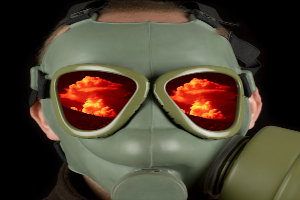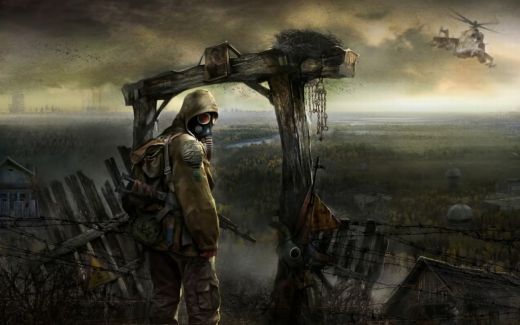 One of the things that makes some folks a little uneasy around preppers, is our inherent fear and disdain for the government. I’m sure it’s not like that for everyone, but I’ve yet to meet a prepper who puts a whole lot of faith in the authorities. We know that governments often fail to protect their citizens during an emergency, and we would much rather take our fate into our own hands, thank you very much.
One of the things that makes some folks a little uneasy around preppers, is our inherent fear and disdain for the government. I’m sure it’s not like that for everyone, but I’ve yet to meet a prepper who puts a whole lot of faith in the authorities. We know that governments often fail to protect their citizens during an emergency, and we would much rather take our fate into our own hands, thank you very much.
Most people however, have at least a little trust in governing bodies, and believe that when things go bad, some highly trained professional with a badge is going to swoop down and save them. “Isn’t that why we pay our taxes?” they must mutter to themselves. With that in mind, it’s not all that surprising to discover that the average person would find your lack of faith in the government, to be disturbing.
I’ve often suspected that one of the reasons why they still think the government has their best interest at heart, is that on the surface, the authorities love to promote preparedness, or at least their brand of it. Any time there is an impending disaster, the media will often read verbatim, some preparedness checklist of supplies and tips that was put together by some government agency (these basic kits that they want all citizens to have on hand, are often comically underwhelming compared to what most preppers have squirreled away). These government preps often lead people to believe that the authorities just want them to be safe. If they didn’t, as those paranoid preppers often claim, then why would they even bother telling us to stock up on vital supplies?
If you take one look at many of these checklists however, you’ll have every reason to believe that the government doesn’t give a damn about your survival. I was actually a little optimistic before I started searching for these checklists, and thought that maybe, hidden away somewhere on the internet, there was a government document that gave useful advice for long-term survival. Boy was I disappointed.
Let’s start with ready.gov, and their brief checklist of essential survival supplies:
- Water
 , one gallon of water per person per day for at least three days, for drinking and sanitation
, one gallon of water per person per day for at least three days, for drinking and sanitation - Food, at least a three-day supply of non-perishable food
- Battery-powered or hand crank radio and a NOAA Weather Radio with tone alert and extra batteries for both
- Flashlight and extra batteries
- First aid kit
- Whistle to signal for help
- Dust mask to help filter contaminated air and plastic sheeting and duct tape to shelter-in-place
- Moist towelettes, garbage bags and plastic ties for personal sanitation
- Wrench or pliers to turn off utilities
- Manual can opener for food
- Local maps
- Cell phone with chargers, inverter or solar charger
That’s actually not a bad list, and if you look at their website you’ll find a few more useful items. However, why do they only suggest a three day supply of food and water? While most disasters don’t disrupt society for more than three days, it’s not exactly unheard of either. Would it kill most people to prepare a month or even a week supply of food and water? I mean, I have more than a week supply of food and it’s hardly a burden. Oh well, let’s move on to the CDC’s checklist.
Food and Water
Electronics
- Flashlight
- Battery powered, solar, or hand crank radio (NOAA Weather Radio, if possible)
- Cell phone with chargers
- Extra batteries
Health and safety supplies
- First aid kit
- Medicine (7-day supply), other medical supplies, and paperwork about any serious or on-going medical condition
- Emergency blanket
- Soap, toothbrush, and other personal care items
You should also keep:
- Family and emergency contact information
- Multipurpose tool
- Copies of important documents such as insurance cards, immunization records, etc.
- Extra cash
- Map(s) of the area
- Extra set of car keys and house keys
Well this sounds like an improvement. They list a few more items like cash and a multipurpose tool, and they suggest a 7 day supply of medication. Still not enough in my book, but it’s a step up. However, they leave the food and water situation open to interpretation. That’s kind of a big deal right? I thought they just wanted you to decide how much you should stock up on depending on the situation, until I read their checklist for pets, which suggests you only stock up on a three day’s supply of chow for your doggie. I can only assume that this applies to humans as well.
Alright, let’s move on to the big leagues: FEMA!
- Three-day supply of non-perishable food.
- Three-day supply of water – one gallon of water per person, per day.
- Portable, battery-powered radio or television and extra batteries.
- Flashlight and extra batteries.
- First aid kit and manual.
- Sanitation and hygiene items (moist towelettes and toilet paper).
- Matches and waterproof container.
- Whistle.
- Extra clothing.
- Kitchen accessories and cooking utensils, including a can opener.
- Photocopies of credit and identification cards.
- Cash and coins.
- Special needs items, such as prescription medications, eye glasses, contact lens
- solutions, and hearing aid batteries.
- Items for infants, such as formula, diapers, bottles, and pacifiers
- Other items to meet your unique family needs
Other items to meet my family’s unique needs you say? But what if my family has a unique need FOR MORE THAN THREE DAYS OF FOOD AND WATER! My God. Is this a meme among government agencies? Were all of these lists written by the same bureaucrat? Or does the government just not want you to survive on your own for more than three days?
Actually that sounds about right, but let’s move on to NOAA’s checklist. I’ve never heard anything terrible about them. Maybe they have a solid plan.
- Water-1 gallon per person per day (3 day supply for evacuation and 2 week supply for home
- Food-a 3 day supply of non-perishable food for evacuation, 2 week supply for home
Finally. It appears that there is at least one government agency out there that wouldn’t have me and mine starving after three days. This list was actually the best I could find. It’s not perfect, but I give them major kudos for including one really basic item that none of the others would. A knife. Well, a utility knife anyway, which if my memory serves, is just a box cutter. Better than nothing I suppose.
That actually brings me to the biggest problem I have with these lists. None of them ask you to stock up on the tools you need to defend yourself. Now I know that they probably don’t want the masses taking to the streets with assault rifles every time there is an emergency. No government (aside from the Swiss) wants that. But would it kill them to at least vaguely mention the possibility that someone might want to hurt you or steal your stuff during a disaster? I mean, it’s not unheard of.
The NOAA list was the only one that came even came close to preparing you for that possibility with their pathetic “utility knife,” and perhaps the CDC list with their “multitool.” I know that’s not why they listed these items, but at least they wouldn’t send you out into the world with nothing but 3 days of food and your bare hands.
 But what can you do? That’s government preparedness for you. For the most part, it seems they want to prepare you to come crawling to them for food, water, and protection after only three days. The thought of you actually surviving on your own for more than a weekend must be abhorrent to them.
But what can you do? That’s government preparedness for you. For the most part, it seems they want to prepare you to come crawling to them for food, water, and protection after only three days. The thought of you actually surviving on your own for more than a weekend must be abhorrent to them.






